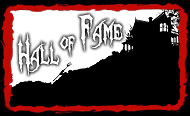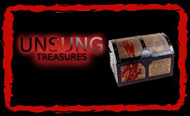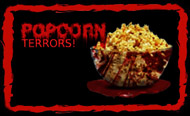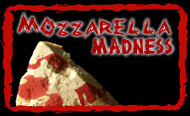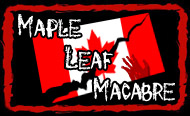While Dream Warriors wasn’t the first review I published here at OTH, it was the first one I wrote way back in early 2008, when I was embarking on the home stretch of grad school. Given that I was drowning in thesis work and student teaching, I turned to an old favorite—in fact, my absolute favorite, per the review—in order to have something ready for the site’s launch. Basically, if there were any movie I could write about in my sleep, it’d be this one, which has to be among my most-viewed during my lifetime. Looking back, the original review almost feels like that, so I’ll be honest: not that I ever really need a reason to revisit this one (I still do so on a somewhat regular basis), I really wanted to talk about it in a way that doesn’t mostly sound like it was written by a guy who’d just spent the last 6 years in the drudgeries of academia. Plus, you know, what if Dream Warriors isn’t my favorite horror movie anymore?
Well, as it turns out, that’s not true: Dream Warriors is still very much my shit—I’m fairly certain that this franchise will forever be my favorite, horror or otherwise. Trust me: seeing Robert Englund don the glove for one last Nightmare sequel would be like my own personal The Force Awakens or what have you, so I find it hard to believe that anything will ever unseat Elm Street in my heart. All of this is to say that revisiting Dream Warriors for the umpteenth time is the very definition of cinematic comfort food, primarily because it’s exactly what I’ve always craved from the genre for most of my life. Even though I definitely had my hardened (read: posturing) gorehound phase where I sought out more hardcore efforts, I’ve generally gravitated towards horror that strives to mix thrills, memorable characters, and genuine ghastliness into an entertaining blend: in short, Dream Warriors is fun as hell, and that’s a descriptor we shouldn’t be afraid to embrace.
Don’t get me wrong: there’s always a place for all strains of horror, but there’s a reason I’ve returned to this film so often, even more so than the original Elm Street. Obviously, Wes Craven’s film is a landmark, and arguably the “better” movie—yet I still have to back up my decade-old claim from my first review that I prefer Dream Warriors. In many ways, it’s the platonic ideal of a sequel that honors what came before it but isn’t afraid to envision more for its premise. A lot of this owes to the increased budget, of course: where Craven expertly shoestringed together lo-fi nightmares, successor Chuck Russell worked with a more expansive canvas since New Line was hitting its stride as a studio (largely thanks to Freddy himself, who immediately reaped the benefits here).
When given the opportunity, Russell doesn’t hold back, as he reimagines Nightmare for its candy-colored, fantasy-laden potential, an approach that’s obvious right off the bat, when Kristen Parker (Patricia Arquette) wanders to Freddy’s now ramshackle abode at 1428 Elm Street. Within its walls, she’s subjected to a series of ghoulish sights and sounds, effectively replicating the experience of riding along through a haunted house attraction. The audience watches as she encounters a boiler room roaring to life on its own, a room full of dead teenagers dangling by their necks, and floors that mysteriously become raspberry-colored sludge, all of it a harbinger for the increasingly elaborate effects work on display throughout Dream Warriors.
From the iconic “Freddy snake” to the inexplicable appearance of a barking pig, the film is loaded with incredible gags, arguably placing this sequel at the top of the list when it comes to horror franchises colliding with the decade’s penchant for blockbuster special effects and spectacle. That Dream Warriors climaxes within a literal funhouse hall of mirrors is appropriate: it’s a rollicking thrill ride from start to finish that captures exactly what I crave from horror movies—killer visuals, inventive, cringe-inducing gore (the marionette gag is an all-time gross-out moment), all in the service of a twisted sense of showmanship.
Serving as the master of ceremonies is Freddy himself of course, coming into his own here in this third outing. It was at this point that Krueger was becoming a genuine pop culture phenomenon, appearing in music videos and even hosting blocks of programming on MTV itself. His ascendant status is reflected within Dream Warriors himself, a film that quickly becomes the dream demon’s own personal sandbox. He’s front and center here in a way that he wasn’t in the previous two films; while he was always a bit of a sardonic wisecracker, he becomes something akin to a clown prince here, dishing out one-liners as Robert Englund grows to truly relish the role and embrace Freddy’s ability to truly shoulder this franchise (it’s no coincidence that he’d soon get top billing in the next sequel).
His expanded role doesn’t necessarily come at the expense of his viability as a monster, though: yes, Dream Warriors set Freddy down the path towards becoming Bugs Bunny with a razor glove in later sequels, but Russell and company strike a nice balance here, allowing him to be funny while maintaining his mean streak. Freddy is undeniably magnetic (and made even more so by the campfire lore backstory introduced here), yet not so much that you don’t want to see him receive his deserved comeuppance at the hands of the titular Dream Warriors.
And this is where the movie (if not the entire franchise, honestly) separates itself: where so many of Nightmare’s slasher contemporaries leaned on their villains, it always recognized the strength of Freddy’s foes, and this is its finest hour in that regards. From the moment Freddy twists Kristen’s first nightmare into what others see as an apparent suicide attempt, there’s a sense that the film has an earnest concern for coaxing the audience’s sympathy for this group of survivors, all of whom are remarkably fleshed out (especially relative to most of the era’s slasher fare). They’ve survived an almost apocalyptic outbreak of teenage deaths, all of which have been ruled suicides since it’s much harder to believe these kids are actually haunted by a demon in their dreams.
Elm Street almost always tapped into the angst of being a teenager whose cries for help go unheard or unheeded, and Dream Warriors especially thrives on an “us against them” vibe pitting these terrified, vulnerable kids against the likes of Dr. Simms (Priscilla Pointer), a Nurse Ratched-esque foil who blames all of her patients’ problems on sex, drugs, and rock-and-roll. Watching the film, you can’t help but be swept up in their desperation: not only are they facing a seemingly immortal, inescapable foe, but they have only a handful of sympathetic—but mostly helpless—adults in Dr. Gordon (Craig Wasson) and orderly Max (Laurence Fishburne). Providing more support is Nancy Thompson (Heather Langenkamp), returning to her hometown six years after her first encounter with Freddy. Not only does she believe the kids’ wild story, but she also provides a spark of hope that he can be defeated. Returning Nancy to the fold is a brilliant turn of events, one that gives the film a slightly more epic quality as the hero returns to help vanquish evil once more.
Except it comes at a great cost, of course: in one of the more gut-wrenching twists in any horror franchise, Freddy avenges his first defeat at Nancy’s hand with an awful sucker punch. Just when it looks like he’s been banished, he reserves one more trick in order to gut Nancy, ripping the audience’s heart right out in the process. On top of being thrilling, scary, funny, and gross, Dream Warriors is also a little heartbreaking: it draws you in with terrific horror imagery, thrills you with insane effects (like the Harryhausen Freddy skeleton sequence), then twists the knife by offing a beloved character. Langenkamp’s shocked reaction shot during Nancy’s death basically seals the deal by reminding the audience that this is what made A Nightmare on Elm Street truly endure. Even the best horror hook imaginable (and this franchise arguably has the absolute best) isn’t quite as compelling if you don’t care about the characters trapped in the nightmare, and Nightmare 3 dares to dream big here by pitting a tremendous ensemble against this generation’s greatest horror icon.
It’s a perfect storm that captured my imagination at just the right age and kept me on the path towards being a lifelong Monster Kid, however twisted that might sound to some (and, with all due respect, fuck them—I turned out mostly alright). Even though I’m far removed from the days when I’d compulsively watch Dream Warriors by renting the VHS copy from my local video store every weekend, it remains my favorite nonetheless—and something tells me I’ll still be saying the same thing ten years from now.
As odd as this might sound, the Nightmare remake is one of the films that inspired this column. Yes, a movie that I’ve seen exactly once and all but vowed to never bother with again, but I figure this shows that I’m not messing around when it comes to giving just about anything a second chance. Not that I was overly convinced going in that this one would suddenly win me over—in fact, if anything, looking back at my original review, I almost wonder if I wasn’t being too nice about it in a chance to remain as objective as possible about a movie that, quite frankly, I could never be objective about. So I was cordial enough, noting that Platinum Dunes at least churned out something that boasts slick production values and an impressive cast, even if the movie itself is largely a lifeless retread.
But who knows: maybe eight (!) years and some distance would allow me to see it with fresh eyes and acknowledge it for whatever virtues it may ha—okay, no, sorry guys, I can’t even finish this sentence with a straight face. I don’t seek to be a negative person (especially when it comes to movies), but somehow, the Nightmare remake is even worse after all these years. Maybe it’s because we now know it all but obliterated this franchise’s viability: save for Platinum Dunes’s overly enthusiastic sequel announcement during this film’s opening weekend (before the box office bottomed out thanks to toxic word of mouth), there’s barely been a hint of anything concerning this franchise’s future. If WB’s decision to hastily reboot Elm Street in the first place was the first nail in the coffin, then this dud of a retread was the final one.
Of course, that’s not the worst fate considering how lackluster this film is—it’s probably very much for the best that Platinum Dunes bothered following it up because I shudder to think what they would have done. Given how unimaginative this movie was, I find it hard to believe a sequel would have been much better; I mean, what were they going to do, just do a half-assed rendition of Dream Warriors? I only assume so because all this effort (a term I use loosely) amounts to is an uninspired Cliff’s Notes version of Craven’s original film. Rather than boldly strike off on its own and break new ground, it’s content to just breeze through the highlights of a movie it’s weakly imitating.
Here’s Freddy emerging from the walls (via a weak CGI replication, I might add), here’s Freddy thrashing a girl about the room while her boyfriend watches on in horror, here’s Freddy’s glove suggestively reaching up between Nancy’s legs in the bathtub, giving the film an impression of a cover band meekly playing a greatest hits package. A Nightmare on Elm Street isn’t a movie; it’s a checklist delivered with all the passion of some producers running through a Powerpoint presentation that explains they’re only tackling this project because it sports a famous title. You know you’re in trouble when Freddy’s first kill involves him slashing a kid’s throat with a steak knife, a decision that sounds even more baffling when you consider this was actually a reshoot to replace the original opening sequence involving a kid playing Guitar Hero.
The rest isn’t much better, as director Samuel Bayer half-heartedly trudges through a film that never seriously tries to anything to escape its predecessor’s shadow. This is most obvious in its refusal to do anything substantial with Freddy himself: for whatever reason, everyone involved thought it’d be a good idea to tap Jackie Earle Haley and throw him in cheap imitation Robert Englund cosplay. He never had a chance, not when his every appearance just reminds you that you’re basically watching someone else wearing a Freddy Krueger Halloween costume. Literally anything else would have been a better idea, if only to take your mind off of what this film was “replacing”; instead, it stubbornly leans into Englund’s legacy, going so far as to have Haley recite lines of dialogue from the original series. That he affects a mushed-mouth delivery and looks like a melted squirrel doesn’t help matters.
Even when the screenplay does try to spark some interest by diverging from the original, it’s almost hilariously misguided. See, in this version of the story, there’s a chance that Freddy might be innocent, the victim of a lynch mob that hastily look the word of a bunch of pre-school children. The only problem with this is that it’s undercut before it can ever be introduced since Freddy is obviously—and uncomfortably—lecherous in his interactions with Nancy, going so far as to suggestively touch her and call her “his favorite.” Like, there’s no doubt this dude was guilty of something, and it’s almost insulting that the script wastes any time trying to misdirect audiences-especially when it tosses it out anyway and reveals that, yes, it turns out that this psychopath donning a razor glove (for some reason? Why does he even have this glove if he never killed the kids when he was alive?) was totally guilty of assaulting these kids.
Like just about everything here, this subplot is a total waste, easily discarded and tossed aside, much like the tremendous cast, here forced to sleepwalk through this insipid, dull retread. The list reads like an all-star roster of squandered talent that deserved better than this: you watch as the likes of Haley, Rooney Mara, Thomas Dekker, Connie Britton, and even Clancy Motherfucking Brown all trudge through this thing, unsure of what the point is, a sentiment that’s surely shared by an audience left wondering why they even bothered with remaking this property in the first place. At a certain point, Elm Street starts to feel less like a beloved title and more like a dead insect pinned and wriggling on the wall of a production company that had already collected most of its contemporaries in its menagerie of remakes.
Words like “dull” and “unimaginative” should never even approach the same breath as Elm Street, which makes this redux all the more disappointing. Here was an opportunity for Platinum Dunes to truly flex its creative muscles and re-imagine a property that boasts endless possibilities and opportunities, and it’s a total, complete whiff. I won’t spend much time harping on what this should have been—mostly because I promised myself not to dwell on stuff too much with this column and because I’ve covered this extensively at Daily Grindhouse—but just know that I’m pretty sure I could have come up with something better than “Micronaps,” a lame concept that’s mostly just an excuse to have Freddy appear for jarring jump scares. There is no excuse for diluting this franchise down to such uninspired nonsense.
At any rate, I can’t say this revisit was too productive: sure, the Dunes’s Nightmare on Elm Street isn’t an outright disaster, if only because it never even tries hard enough to put itself in a position to fail spectacularly. Rather, it’s operating with the safety net of familiar story beats and the studio’s sleek production values, acting here as a sort of camouflage of competence that can almost trick you into thinking this to be a worthwhile effort. In reality, it’s deployed to deceive you, effectively turning Elm Street into a shiny object that you can look at for 90 minutes before you discard it to the nether-reaches of your mind. Because of this, it’s the worst of the modern major remakes: say what you want to about Rob Zombie’s Halloween, but those two movies (mostly) represent an attempt by a filmmaker to put his stamp on a property and remake it with his own sensibilities.
This one can’t even boast that because it feels like the mercenary product of a studio whose defining sensibility here seems to be fulfilling a sense of obligation—after tackling Leatherface, Amityville, The Hitcher, and Jason, Freddy simply felt like another iconic character to add to its portfolio. In no way does it feel like a passion project outside of Andrew Form and Brad Fuller’s desire to say they climbed this mountain simply because they could. I’ve put more thought into planning what I’m going to have for lunch.
Stay tuned throughout the year as Slashbacks revisits more titles reviewed during OTH’s first 10 years. comments powered by Disqus Ratings:

Average members rating (out of 10) : Not yet rated
Votes : 0
Votes : 0


